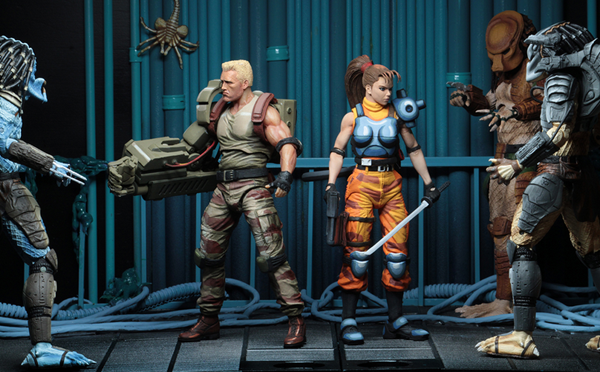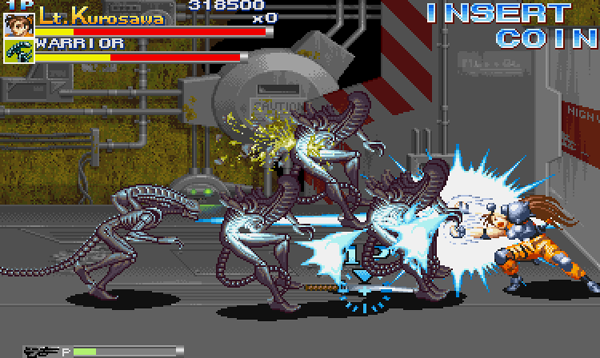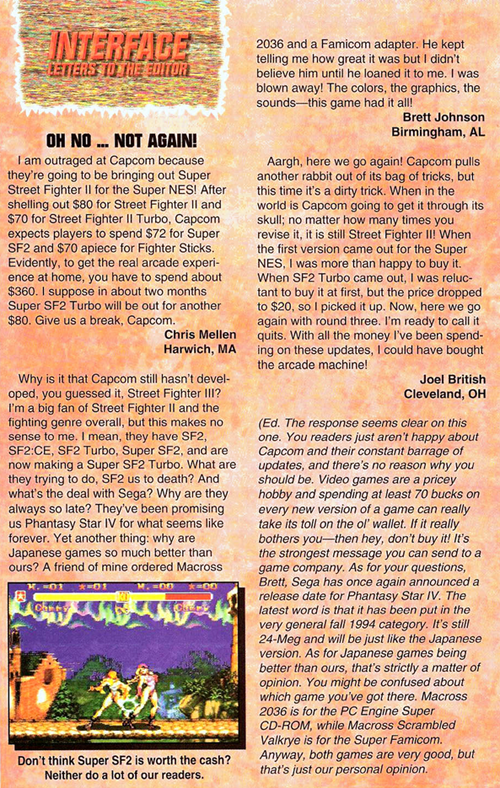I haven’t been to the Toy Fair in a long, long time, but I always like looking at the new trinkets it brings. After all, a good chunk of the toy market targets adults collecting new versions of their beloved childhood possessions. I usually abstain from actual purchases, but there’s no harm in looking at things you want and then coming up with excuses not to buy them. I do it all the time.
NECA’S ALIEN VS. PREDATOR
NECA makes dozens of toys based on Aliens, Predators, and the cinematic unions thereof, but these are different. They’re based on Capcom’s Alien vs. Predator game, a semi-obscure 1994 arcade brawler never ported to any home console. As the wrestling fans say, I marked out and marked out hard for these.

NECA announced Alien vs. Predator arcade toys last year, but they stuck to the actual Aliens and Predators, including the playable Hunter and Warrior predators, the Smurf-colored Mad Predator boss, and the vexing Razor Claws. The new addition is a two-pack of the game’s human heroes: cyborged-out Dutch Schaefer from the first Predator movie and technically original Capcom heroine Linn Kurosawa. Fifteen years ago, a Linn Kurosawa toy would’ve topped any far-fetched wish list I made.
But what’s the big deal with Capcom’s Alien vs. Predator? For my money, it’s one of the best brawlers around. It has that gorgeous spritework you’ll see in all Capcom arcade games of the 1990s, and the designers really make the most of the license: the environments are wonderfully grimy and bleak, the new xenomorph variants fit perfectly into the mix, and even the standard Aliens slink along the ground and creep out of the shadows with wonderful Gigerian flair.

Alien vs. Predator also dodges that common flaw of belt-scrolling beat-‘em-ups: repetition. Each character has a wealth of attacks, and the throngs of Aliens show careful variety. And just when you might get sick of fighting the creatures, the game pulls out that familiar Alien plot twist of the military exploiting the xenomorphs, leading you to fight off brigades of corrupt soldiers and their power-loaders. And then the Aliens come back for the finale.
For that last dose of mystique, Alien vs. Predator never appeared on any home systems. A 32X port and a Saturn version were rumored and canceled, leaving Capcom’s brilliant creation to arcades and emulation. Linn Kurosawa has recurring cameos in some later games, appearing in backgrounds in Street Fighter Alpha 2 and Street Fighter III while inspiring the lookalike Simone in Cannon Spike. For a brief time, she was my favorite video game character ever, and I’d hear no talk about how she was just a Capcom clone of recurring Alien vs. Predator comic heroine Machiko Noguchi.
Why I Probably Won’t Buy Them:
Neca figures tend to be expensive. Going by the pricing on similar two-packs, Major Schaefer and Lieutenant Kurosawa will run about forty bucks. That, and Linn’s waist is too high and her crotch is too big. Perhaps I shouldn’t be picky about a toy I’ve wanted for twenty years, but there’s money at stake.


